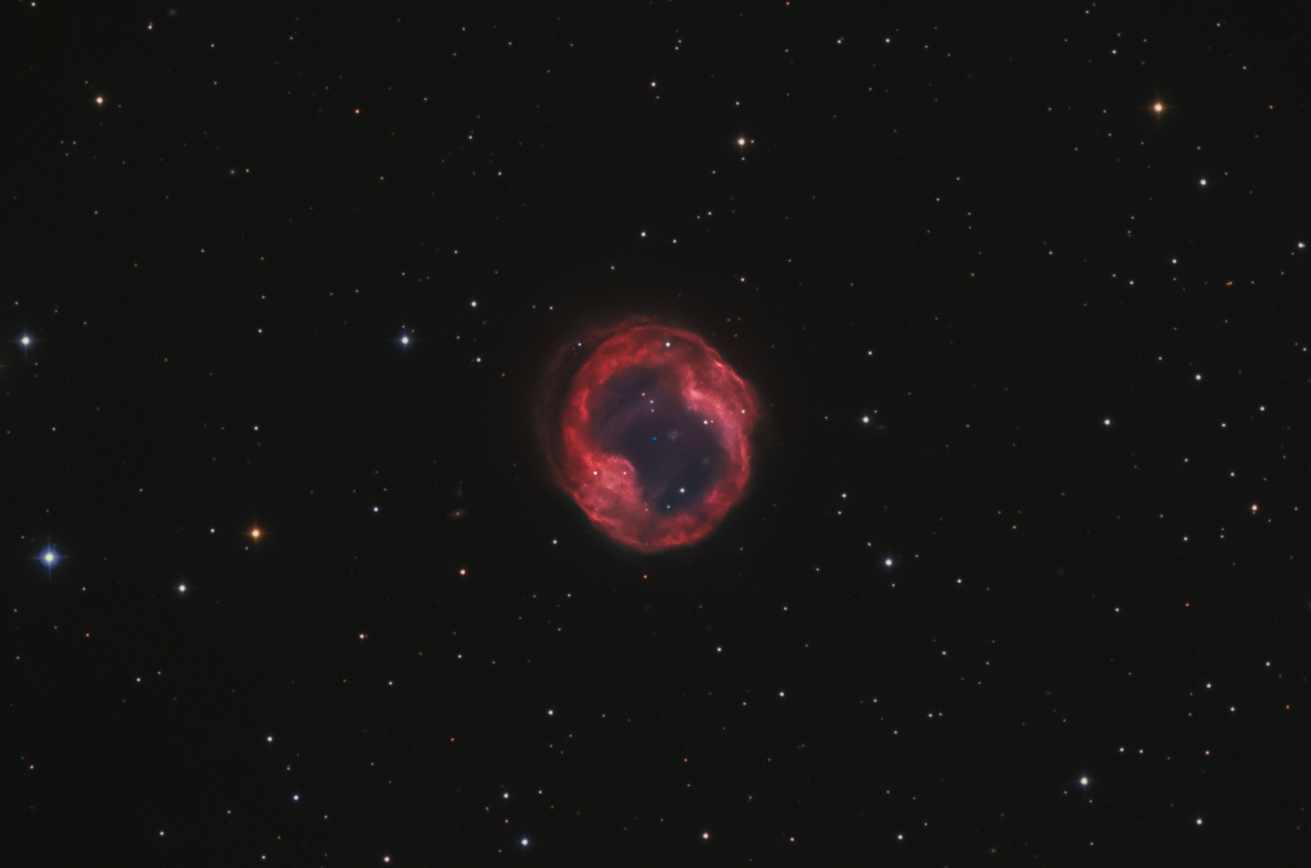PK164+31.1 (Jones-Emberson 1)
Characteristics:
Magnitude: Approximately 14
FOV: A little less than 28' x 42' after cropping
RA (J2000): 07h 57m 52s
Dec (J2000): 53 degrees 25' 17"
Position Angle (Pinpoint): plus 2 degrees
Description:
PK164+31.1
is a planetary nebula,
which represents the end stage of stars between 1 and 8 solar masses
(in contrast, stars much larger than our Sun
typically undergo a supernova explosion). Such stars live on the
Main Sequence for about 10 billion years, during which they burn
hydrogen to helium in their cores. Eventually the core hydrogen
becomes depleted and the star contracts, setting off burning of
hydrogen to helium on its surface. Thereafter the star gradually
expands, becoming both cooler and more luminous (shifts to the upper
right of the Hertzsprung-Russell
diagram), transitioning into a red giant. Eventually,
enough pressure builds up in the core to start fusion of helium to
carbon, and the star enters the Asymptotic Giant Branch (AGB) phase on
the HR diagram. The AGB phase is characterized by shedding of the
star's outer layers into space, igniting surrounding elements such as
hydrogen through
excitation by the solar wind and heat, resulting in the characteristic
gaseous shell of the planetary nebula. The
term "planetary" nebula is a misnomer and was coined by Herschel, based
upon its superficial visual resemblance to his recently discovered
planet, Uranus. The PK catalogue was assembled by Czech
astronomers Perek and Kohoutek in 1967, with the first number (164 in
this case) representing galactic longitude (i.e., the plane of the
Milky Way is used as the reference point), the second number (+31)
representing galactic latitude, and the number after the decimal point
(1) indicating that this object is the first to be catalogued in this
region of space.
Photographic
Details:
Date: November 23, 2008 (Ha); November 28 and 29, 2008 (RGB)
Scope: Vixen VC200L at f6.1 (FL = 1235 mm) on the
Takahashi NJP
Mount
Autoguider: SBIG ST-402 with
60mm guidescope, focal length 227mm
Camera: Apogee U32 -25C
Filters: Astronomik
Ha (6nm), R, G, B filters
Exposures: Ha: 9 x 20' = 180' (unbinned); R: 6 x 10' =
60' (unbinned); G: 6 x 10' = 60' (unbinned); B: 8 x 15' = 120'
(unbinned). Total exposure 7 hours
Conditions: Not ideal-
intermittent clouds and generally poor seeing. Typical winter
weather in New England.
Post-processing:
Calibrated, aligned, and Sigma Clip combined
in Maxim. DDP
in ImagesPlus (IP). Deconvolution
in Maxim using Bob
Vanderbei's Fat Tail Deconvolution script (3 iterations).
Further processing in Photoshop
CS (16
bit format).
Please
note: Graphics on this website may not be reproduced without
author permission.
Back to Nebulae
Home

